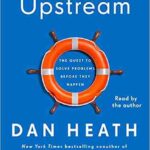Cognitive tunneling is one of the principal causes of accidents involving human error. It is also the source that prevents many business owners from seeing all possible solutions to everyday business problems, causing them to make bad business decisions.
Cognitive tunneling, also called Cognitive Capture and Inattentional blindness, is the mental state in which your brain focuses on one thing. As a result, your brain does not see other relevant data. This perceptual blindness causes our attention to miss even the most obvious clues to the problem that can be right in front of us.
Cognitive Tunneling and Human Error
In the crash of Ethiopian Airlines Flight 302, the pilot and co-pilot kept trying to use brute force to pull on the yoke in an attempt to keep the plane’s nose from sinking. Cognitive tunneling kept the flight crew from considering other options to get the Boeing 737 Max under control, such as reducing power or switching off the MCAS. Both options would have allowed the pilots to regain control of the aircraft, however, as a result of Cognitive Tunneling, their attention remained focused on pulling the yoke.
A similar cognitive tunneling condition occurred with Air France Flight 447 when it crashed into the Atlantic Ocean in 2009. When ice accumulated on the sensor that measures airspeed, the autopilot automatically disengaged. While the flight computer kept spitting out instructions to correct the problem, the pilot ignored them and remained fixated on the gauges that were giving faulty readings due to being iced over. As a result, the pilot increased the angle of attack until the plane stalled. Even after the stall, the pilot could have recovered control by lowing the nose. Fixated on the faulty instruments however, he continued to try to push the plane upward increasing the severity of the stall, and ultimately causing the plane to crash.
Floodlight vs Spotlight Focus

Metaphorically, a mind’s focus can be either like a floodlight dimly illuminating a large area, or it can be like a spotlight providing intense clarity on a single subject. Cognitive Tunneling is when your mind’s focus remains in spotlight mode.
Most of the time Cognitive Tunneling serves us well as a species and has allowed us to develop minds capable of remarkable feats. It allows us to ignore all other stimuli like sounds, smells, and other distractions that are unimportant to a particular task, and allows us to focus on a single object of interest. However, in hectic and stressful situations, cognitive tunneling can also have serious and negative consequences when it limits our ability to process peripheral information because we are overcommitted to some central issue.
As a business owner, we often rely on various forms of automation to make our jobs easier. Our focus in these situations is in a floodlight stage, providing less intense coverage over a wider field of view. However, when things begin to go wrong, our stress level rises and human nature kicks in, changing our mental focus from floodlight to spotlight mode.
Mental Focus Area
The area of intense mental focus after the switch from floodlight to spotlight is most often the first suspected area of concern we encounter. However, rather than consider other relevant aspects, our mind is like a dog with a bone and gets locked into overly scrutinizing a specific area. As a result, we are all too often blinded from seeing more obvious contributing factors.
In one of Parham Doustdar’s blogs, he talks about a friend that developed an app to sell cars online. After a series of targeted announcements heralding the imminent launch of the site, he sat back to watch the launch. Immediately after launch, the site traffic skyrocketed… and just as quickly fell to zero. The sudden decline in visitors caused him to switch from floodlight to spotlight mental focus. Resorting to reactive thinking, the target of his focus was that there must be something wrong with the app and he shut it down while he drilled into his Google analytics for answers. After finding no apparent causes for the app’s failure, he figured it was a lack of functionality and improved the app, then scheduled another launch.
Following the same script as the first launch, he sent out a series of targeted announcements and sat back to watch. The same spike in visitors was followed closely by a precipitous drop in page views shortly after the launch. Disheartened by the second collapse and high bounce rate, he was convinced the app itself was at fault and shut it down for good.
Sometime much later, he discovered that folks visited his site during the workday, and liking what they saw, bookmarked the site so they could return after work. However, they discovered that the site was shut down when they returned. Parham’s friend suffered from a case of cognitive tunneling that prevented him from seeing the real issue.
Priming Our Mental Focus Area
Priming is an important element when it comes to Cognitive Tunneling. When we are told that something is the issue, we tend to block out other possibilities. In a process known as Confirmation Bias our internal dialog searches for, interprets, and recalls information in a way that conforms to our initial hypotheses.
In the now-famous Selective Attention Test video, participants were primed when instructed to count the number of passes. At the conclusion of the video, participants were asked not how many passes there were, but if they noticed anything strange. Many participants were so fixated on the task at hand, which was to count the number of passes, that they did not recall seeing the gorilla.
Used effectively, priming and a person’s propensity for cognitive tunneling can be weaponized. By suggesting something to be a fact (priming) and introducing a little bit of stress to cause the other person to switch from floodlight to spotlight mode. This can often cause someone to disregard evidence that counters the argument and agree.
Mental Model Counters Effects of Cognitive Tunneling
To counter our tendency of cognitive tunneling, experts recommend having a mental model of how things work in a system. Our mental image allows us to back away from our area of intense mental focus, and see the big picture. By using a mental model, we are more apt to use our spotlight intensity to run through a psychological checklist and scan for data, rather than focus on just one issue, thereby avoiding the negative effects of cognitive tunneling.
With a mental model, you can run through various scenarios before they occur so you have the ability to know where to focus your attention in an emergency or high-stress situation.
When an engine explosion and subsequent fire onboard Qantas Flight 32 damaged twenty-one of the plane’s twenty-two major systems, chaos initially ensued. However, the captain used his mental model to focus on what was still working instead of what was non-functional. He visualized the giant Airbus A380 as if it was a single-engine Cessna and commanded the few necessary parts that still were working. Doing this, he was able to turn the plane around and land safely.
Cognitive tunneling can often rear its ugly head during important sales calls. As small business owners who are also salesmen, we can be best served by rehearsing a sales call over and over in our mind before the meeting, trying to anticipate responses to various questions and situations as they might occur. Later during the actual sales meeting, when the client asks a tough question that would normally raise our stress level and cause us to switch from floodlight to spotlight mode, we can use the mental model to help scan for potential responses. However, when we do not have a mental model to rely on, we often freeze up and babble aimlessly, unsure of how to answer the question. Be honest – we have all had one of these moments.
As business owners, we often encounter stressful situations that cause our brain’s focus to switch from floodlight mode to spotlight mode. While we often can’t prevent cognitive tunneling from occurring simply by acknowledging that it is a biological adaptation, we can mentally force our brains to override this predisposition. By recognizing cognitive tunneling, we can force our minds to step above the problem by applying a mental model so we can see other alternative solutions and answers.
Do you have a mental model of how things will occur so you can avoid cognitive tunneling?












